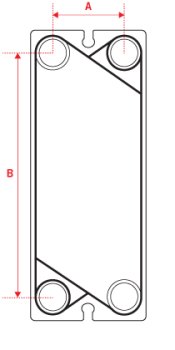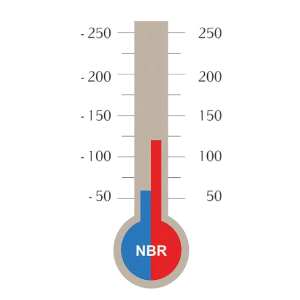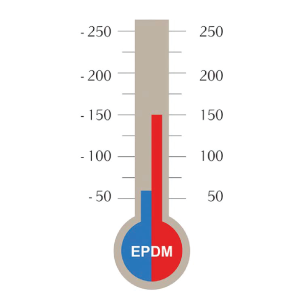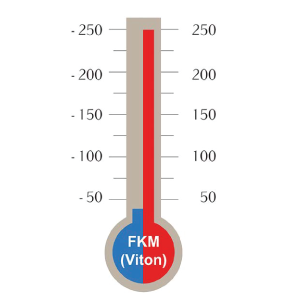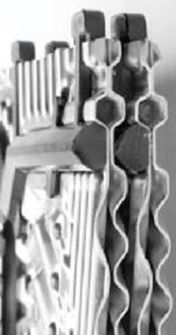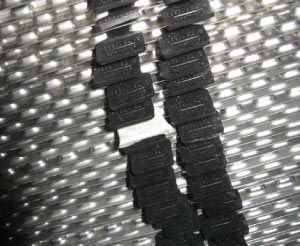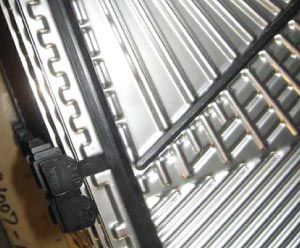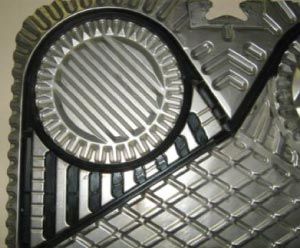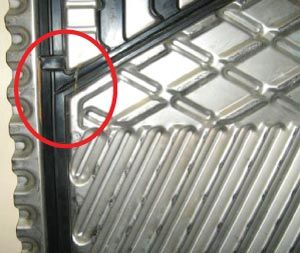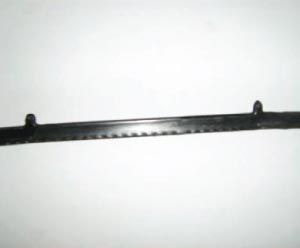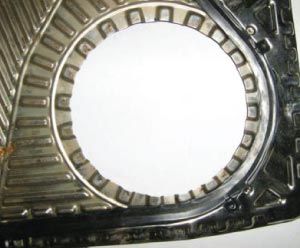Bell & Gossett Gaskets
Bell&Gossett Gaskets
| Model Frame type |
GPX 34P |
GPX 34P FG |
GPX 34P FGL |
GPX 130 FG |
GPX 130 VLCH |
GPX 130 DWFG |
| A = mm | 60 | 60 | 60 | 135 | 135 | 135 |
| B = mm | 357 | 357 | 357 | 591 | 591 | 591 |
| Model Frame type |
GPX 161 |
GPX 161 FG - FGL |
GPX 161 FD |
GPX 151 FM - FML |
GPX 151 FG - FGL |
GPX 151 FD |
| A = mm | 140 | 140 | 140 | 140 | 140 | 140 |
| B = mm | 640 | 640 | 640 | 640 | 640 | 640 |
| Model Frame type |
GPX 237 FM |
GPX 237 FG |
GPX 237 FD |
GPX 258 FG |
GPX 258 BFD |
|
| A = mm | 225 | 225 | 231 | 234 | 234 | |
| B = mm | 719 | 719 | 719 | 703 | 703 | |
| Model Frame type |
GPX 258B FM |
GPX 258B FG |
GPX 258B FD |
GPX 463 FG |
GPX 463 FS |
GPX 646 FM8 |
| A = mm | 225 | 225 | 231 | 290 | 290 | 298 |
| B = mm | 719 | 719 | 719 | 1046 | 1046 | 1294 |
| Model Frame type |
GPX 646 FG8 |
GPX 646 FD8 |
GPX 678 FML |
GPX 678 FM8 |
GPX 678 FG8 |
GPX 678 FD8 |
| A = mm | 298 | 304 | 298 | 298 | 298 | 304 |
| B = mm | 1294 | 1294 | 1294 | 1294 | 1294 | 1294 |
| Model Frame type |
GPX 807 FL |
GPX 807 FG |
GPX 807 FD |
GPX 807 BWGF |
GPX 807 BWFD |
GPX 538 FG |
| A = mm | 350 | 350 | 350 | 350 | 350 | 365 |
| B = mm | 1315 | 1315 | 1315 | 1315 | 1315 | 930 |
| Model Frame type |
GPX 538 FD |
GPX 850 FG |
GPX 850 WGF |
GPX 850 SFG |
GPX 850 DWFG |
GPX 850B BGF |
| A = mm | 365 | 365 | 365 | 365 | 365 | 365 |
| B = mm | 930 | 1450 | 1450 | 1450 | 1450 | 1450 |
| Model Frame type |
GPX 915 FM |
GPX 915 FG |
GPX 915 FS |
GPX 1152 BFL |
GPX 1152 BFG |
GPX 1152 BFD |
| A = mm | 353 | 365 | 353 | 430 | 430 | 430 |
| B = mm | 1478 | 1478 | 1478 | 1550 | 1550 | 1550 |
| Model Frame type |
GPX 1152 BFL |
GPX 1152 BFG |
GPX 1152 BFD |
GPX 1614 FG |
GPX 1614 FD |
GPX 1614 FS |
| A = mm | 430 | 430 | 430 | 439 | 439 | 439 |
| B = mm | 1550 | 1550 | 1550 | 1939 | 1939 | 1939 |
| Model Frame type |
GPC 1700 HBM |
GPX 1700 HA |
GPX 1700 FM |
GPX 1980 FG |
GPX 1980 FD |
GPX 2150 HA |
| A = mm | 540 | 540 | 596 | 596 | 596 | 765 |
| B = mm | 1836 | 1836 | 1842 | 1842 | 1842 | 1850 |
